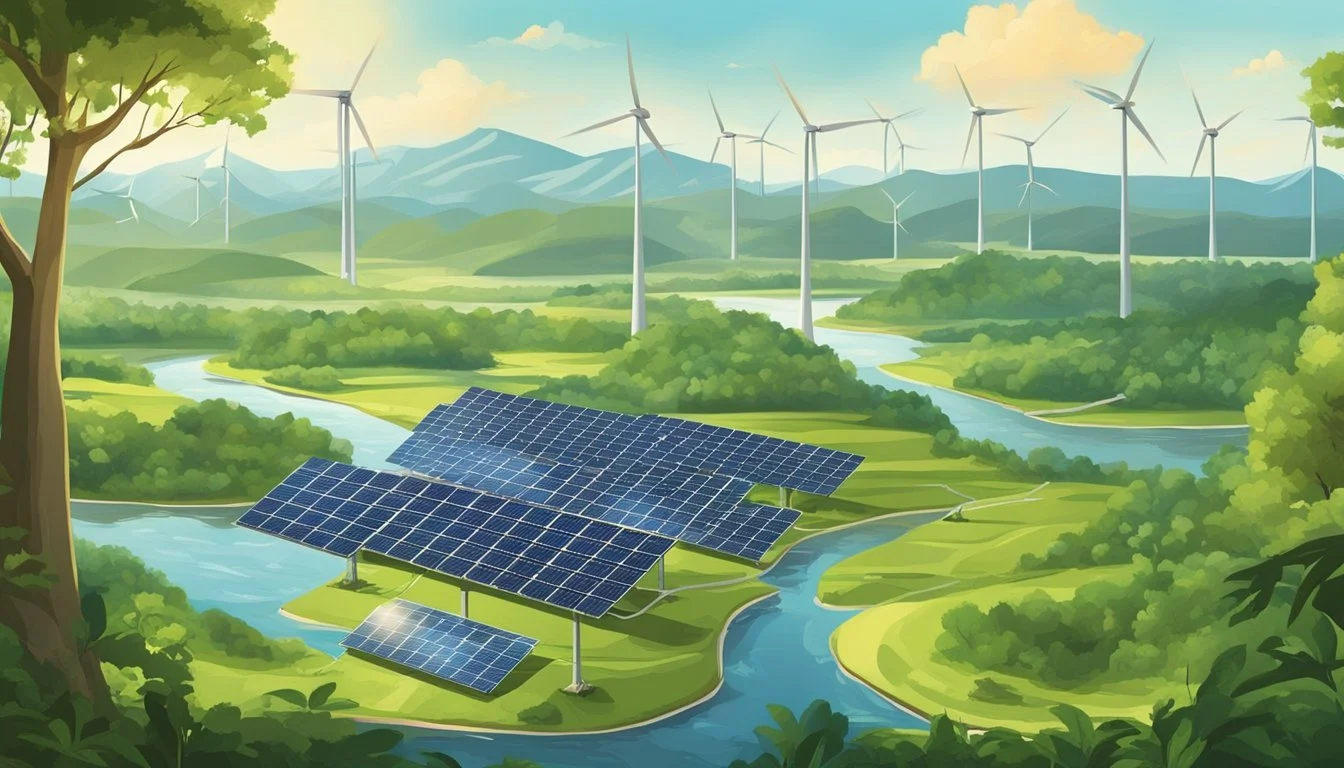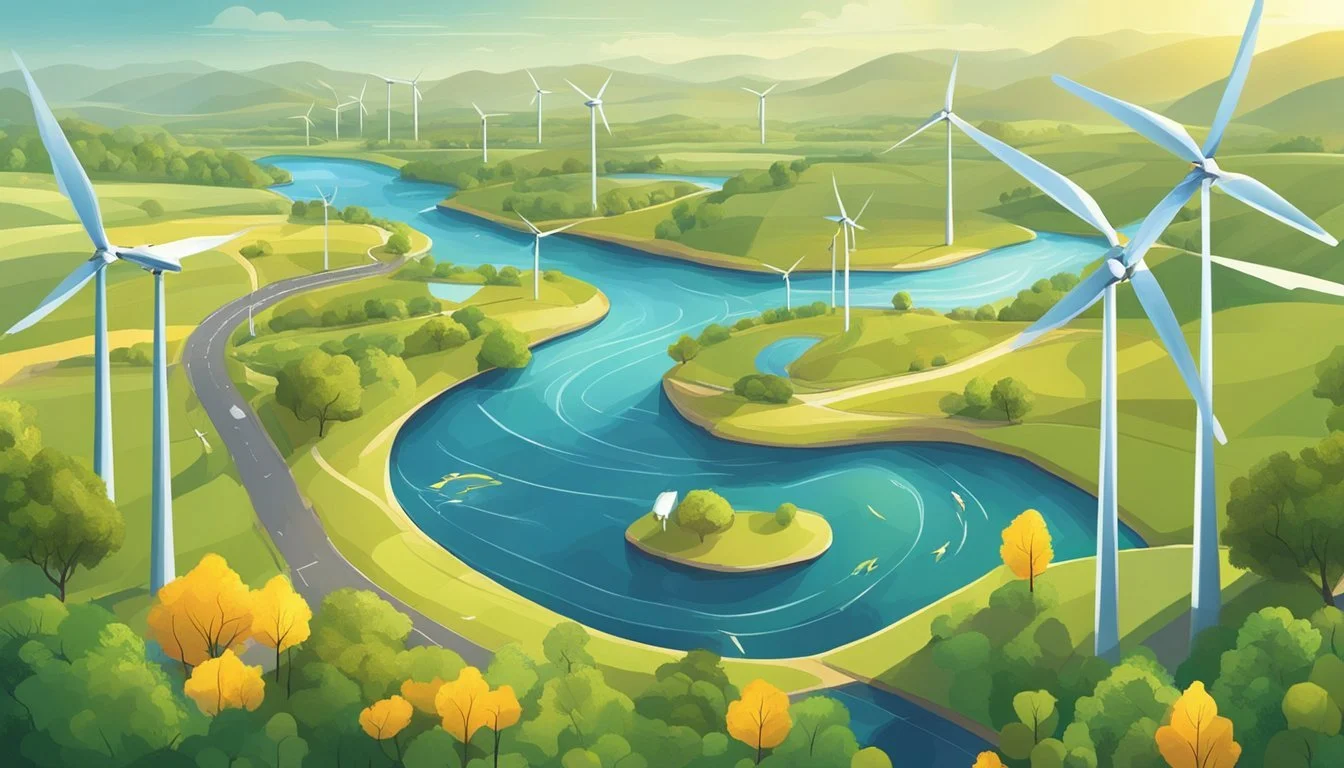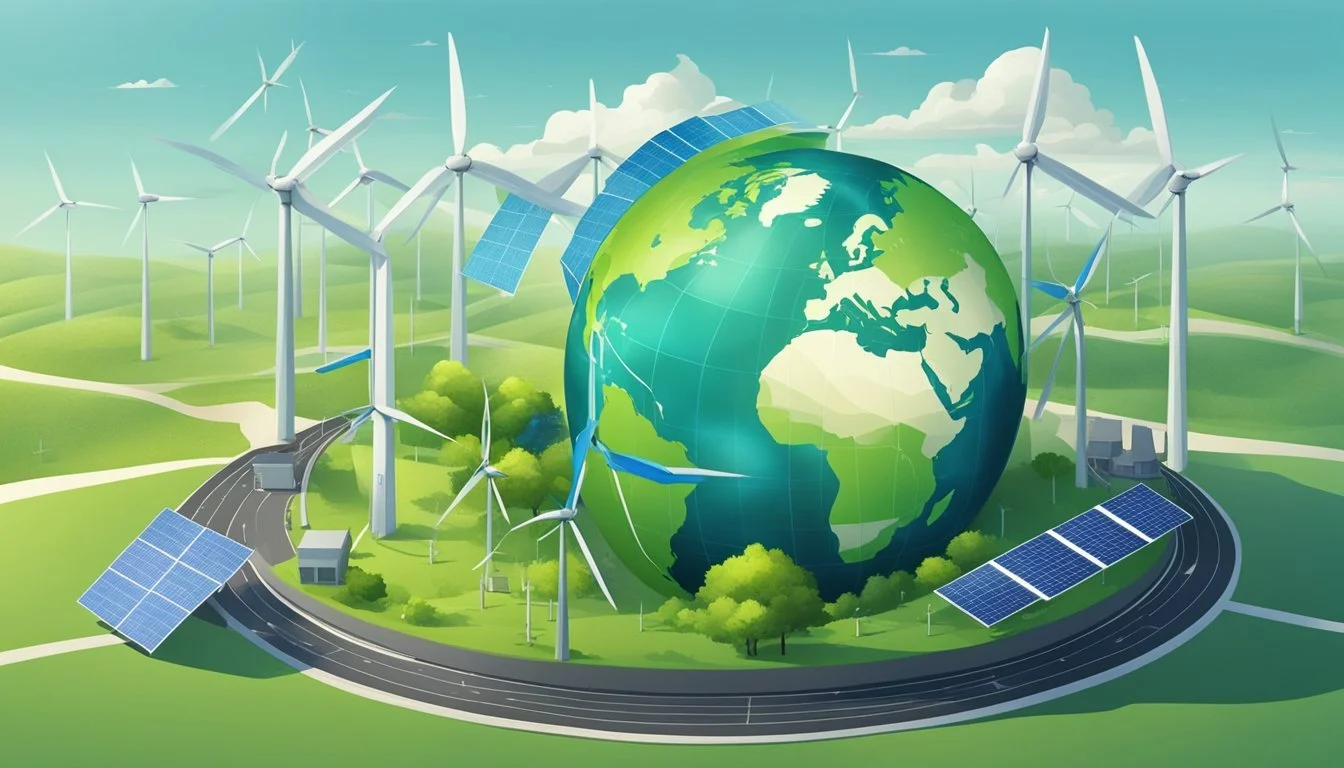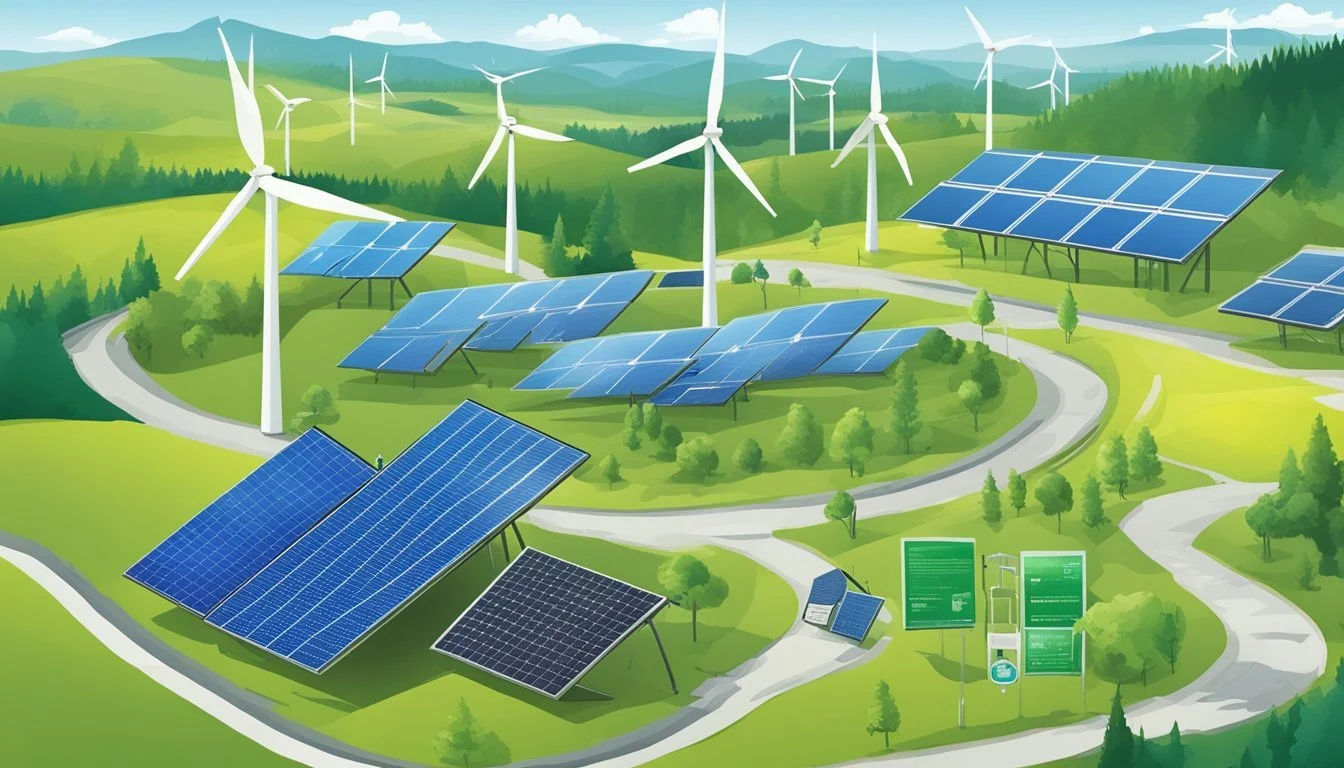Incentives for Renewable Energy and Conservation in Washington
Policies and Benefits
Washington State stands at the forefront of promoting renewable energy and conservation through an array of incentives. These programs are designed not only to encourage residential and commercial customers to adopt green energy solutions but also to spur economic growth and reduce the carbon footprint. The incentives vary from tax credits and rebates to other financial assistance programs that significantly lower the initial costs of installing renewable energy systems.
Recognizing the importance of environmental sustainability, Washington has implemented measures such as the Washington Energy Independence Act to further its commitment to clean energy. Furthermore, the state offers sales tax exemptions and utility company incentives to reduce the financial burden on those who install renewable energy systems. Incentives cover a multitude of options, from solar panels to wind turbines, ensuring a broad range of technologies are supported.
Through these efforts, Washington not only supports the transition to a more sustainable future but also provides valuable economic advantages to those who partake in the renewable energy sector. These fiscal incentives reflect the state’s dedication to fostering an environment where renewable energy and energy efficiency are not only viable but are also actively encouraged for the long-term benefit of the state's economy and the health of its natural ecosystems.
Overview of Renewable Energy in Washington
In Washington State, renewable energy is an area of significant development and focus, benefiting from robust policies and diverse natural resources that contribute to its clean energy goals.
Key Renewable Resources
Solar Energy: The state's promotion of solar power is evident in their various renewable energy incentives aimed at reducing greenhouse gas emissions. Investment Tax Credits (ITC) for solar have been established, which are set to decrease incrementally by 2023; however, they are currently serving as an impetus for residential and commercial solar installations.
Wind Energy: Wind power plays a crucial role in Washington's renewable portfolio. The state capitalizes on its windy coastlines and mountain passes, which are optimal for wind farms. This resource is crucial for meeting the state's renewable energy mandates and reducing reliance on fossil fuels.
Current Energy Landscape
State Legislation: The Clean Energy Transformation Act (CETA) was signed into law, committing Washington to a greenhouse gas-neutral electricity supply by 2030 and to a supply that is free of greenhouse gas emissions by 2045. This landmark legislation propels the state toward its clean energy future by encouraging the growth of renewable energy and mandating strict energy standards.
Energy Conservation: Washington State's dedication to energy conservation emerges from progressive policies like the Climate Commitment Act and building performance standards. Together with incentive programs encouraging the adoption of renewable systems and attention to energy efficiency, these initiatives are shaping an environmentally responsible energy landscape.
Incentive Programs and Financial Mechanisms
In the shift towards a more sustainable energy future, Washington provides a range of incentive programs and financial mechanisms, including rebates and tax credits, to encourage both individuals and businesses to invest in renewable energy and energy efficiency.
Federal Incentives
Federal incentives for renewable energy and energy efficiency include mechanisms such as the Renewable Electricity Production Tax Credit (PTC), which provides a per-kilowatt-hour tax credit for electricity generated by eligible renewable sources. Additionally, Modified Accelerated Cost-Recovery System (MACRS) allows for the accelerated depreciation of investment in renewable energy assets, reducing tax burden and improving financial returns.
State Incentives
In the state of Washington, one finds a suite of state incentives designed to complement federal offerings. These incentives aid in reducing the initial cost barrier of adopting renewable energy technologies and improving energy efficiency in homes and businesses.
Renewable Energy System Incentive Program
The Renewable Energy System Incentive Program in Washington encourages residents to install renewable energy systems by compensating them for the electrical output of their solar, wind, or other eligible renewable energy systems. This program aims to support the state's environmental goals while promoting local economic growth by investing in clean energy technologies.
Investment Tax Credits and Rebates
Investment tax credits (ITC) significantly lower the cost of solar installations for residential and commercial taxpayers. The Residential Energy Credit is another cornerstone, providing a sizable rebate for solar photovoltaic and solar water heating systems. These rebates and tax credits are pivotal, making renewable energy investments more feasible and attractive to a broader audience.
Economic and Environmental Impact of Renewable Energy
Renewable energy initiatives not only foster economic prosperity but also serve to mitigate environmental challenges. They are pivotal in driving job growth and reducing greenhouse gas emissions, setting the stage for both a healthier economy and a sustainable environment.
Job Creation and Economic Growth
The promotion of renewable energy technologies has been a significant factor in job creation and economic expansion within the sector. Specific policies like the Renewable Electricity Production Tax Credit (PTC) and the Investment Tax Credit (ITC) act as catalysts for investment and development. They also provide substantial economic incentives for both businesses and homeowners, including tax credits for residential energy efficiency. These incentives directly translate to job creation within the renewables sector, which in turn has a ripple effect of boosting local economies. For instance, significant job opportunities have emerged in the production and installation of solar panels, wind turbines, and other renewable energy technologies.
Reduction in Greenhouse Gas Emissions
The switch to renewable energy sources like wind, water, and solar is tied to substantial reductions in greenhouse gas emissions. This shift addresses one of the most pressing environmental concerns: climate change. Clean energy technologies produce minimal, if any, harmful carbon dioxide emissions — the primary culprit in global climate warming. According to the Department of Energy, power generated from renewable sources avoids emissions that contribute to health risks, species loss, and extreme weather events related to climate change. By adopting renewable energy, not only does the environment benefit from decreased pollution and its safeguards for ecosystems, but public health is also significantly improved by reducing the pollutants that lead to respiratory and cardiovascular diseases.
Legislation and Regulation
Washington State has implemented robust legislation and regulatory frameworks to align with its clean energy goals, fostering a landscape where renewable energy and conservation are prioritized, and fossil fuels are phased out in favor of green alternatives.
Clean Energy Transformation Act (CETA)
The Clean Energy Transformation Act (CETA), passed by the Washington State Legislature in 2019, embodies a comprehensive approach to altering the energy landscape. It mandates that all electric utilities in Washington transition to a supply of non-emitting and renewable resources by 2045. Critical to this path is the fact that, by 2030, electricity sold to Washington consumers must be greenhouse gas neutral (Clean Energy Transformation Act - Washington Utilities and Transportation Commission). Utilities are required to adhere to these regulations and demonstrate compliance through incremental steps, which are closely monitored by the Washington Commerce Department.
Building Codes and Renewable Requirements
The state's building codes are not just guidelines but active measures to encourage the incorporation of renewable energy systems. Residential and commercial constructions now have to meet strict energy conservation standards which often include the installation of renewable energy technologies. Washington’s commitment to upholding stringent building codes reflects its dedication to decreasing reliance on fossil fuels and promoting sustainable development. These requirements work alongside CETA to ensure commerce and construction sectors also contribute to the state’s clean energy transformation, driving regulations that lead to more energy-efficient and sustainable buildings.
Utility Companies and Grid Modernization
Utility companies in Washington are instrumental in the transition towards a modern grid system that can support the growing demand for renewable energy. They are not only pivotal in ensuring grid stability through infrastructure upgrades but also in supporting community-focused initiatives like community solar programs. This section explores the electric utilities' role in grid modernization, the essential infrastructure upgrades required for grid stability, and the advancement of community solar initiatives.
Electric Utilities' Role
Electric utilities and investor-owned utilities are key players in implementing grid modernization strategies. They are responsible for integrating advanced technologies to accommodate an increasing share of renewable energy sources while maintaining reliable service. Washington's Grid Modernization - Department of Energy efforts involve substantial investment and partnership with research organizations and energy services companies to enhance grid functionality.
Infrastructure Upgrades for Grid Stability
Stable energy supply hinges on robust grid infrastructure. The Biden-Harris Administration has allocated funds for comprehensive technological solutions to fortify the grid against a variety of hazards. Upgrades include the deployment of smart grid technology and increased energy storage capacity to help manage energy costs and improve system resilience. These initiatives not only protect the grid from extreme weather conditions but also ensure a transition to a clean energy future is possible.
Community Solar Initiatives
Community solar initiatives allow residents to benefit from solar energy without needing to install panels on their own property. This model is especially beneficial for those who cannot afford the upfront cost of solar installations or who live in unsuitable conditions for solar. By advancing these community-based programs, utility companies diversify energy services and promote equity in access to renewable energy, mitigating energy costs for participants and supporting the local economy.
Support for Low-Income Households
In Washington, initiatives targeting low-income households are designed to alleviate the energy burden and make renewable energy solutions more accessible. These initiatives come in various forms, such as energy assistance programs and low-cost renewable solutions, with the goal of helping those most in need to reduce their energy expenses and participate in sustainable practices.
Energy Assistance Programs
The Low-Income Home Energy Assistance Program (LIHEAP) plays a vital role in Washington, offering financial assistance to help eligible low-income households manage the costs associated with home heating and cooling. LIHEAP provides a buffer for families struggling to cover their energy bills, ensuring that heating and electricity remain affordable through challenging economic times. This type of energy assistance is critical in preventing service disconnections during extreme weather, potentially safeguarding families from hazardous temperatures.
Access to Low-Cost Renewable Solutions
Alongside direct energy assistance, Washington is fostering access to low-cost renewable energy solutions for low-income households. The push towards sustainable energy in affordable housing is made manifest through grants and loan awards, like those announced by the Biden-Harris Administration, that contribute to energy efficiency and climate resilience. Specifically, funds are allocated to retrofit low-income, HUD-assisted multifamily properties, promoting the usage of efficient appliances and reducing overall energy consumption. These initiatives increase the accessibility of clean technologies, including the installation of energy-efficient heat pumps, that would be otherwise financially out of reach for low-income families.
Consumer Protection and Safety
In Washington, consumer protection and safety in the realm of renewable energy and conservation are paramount. The state has established firm protocols to protect consumers from fraudulent activity and to ensure the safe installation and operation of renewable energy systems.
Safeguards Against Imposter Scams
Consumers are defended against imposter scams through stringent verification processes. The Washington State Department of Commerce actively warns residents about the rise of fraudulent activities where scammers pose as utility representatives. They recommend consumers to:
Always ask for identification before discussing their account or personal information.
Verify any unsolicited contact by calling the utility company directly using the contact information provided on bills or the company’s official website.
Ensuring Safety in Renewable Installations
The safety of renewable energy installations in Washington is safeguarded by standards and regulations enforced by entities like the U.S. Department of Energy. Installations must comply with:
Strict electrical and building codes to ensure installations are performed correctly and safely.
Programs like the Renewable Energy System Incentive Program, overseen by the Washington State University (WSU) Energy Program, which promotes safe, quality installations.
Funding and Grants for Renewable Energy
In Washington, there are substantial financial resources available aimed at advancing renewable energy through various funding opportunities and grants. These offerings are integral for supporting research and development and implementing advanced technologies that contribute to energy conservation.
Financial Incentives for Research and Development
The Department of Energy invests heavily in research and development to improve renewable energy technologies, making them more accessible and cost-effective. Financial incentives are available for projects focusing on innovative solutions to energy challenges. The Clean Energy Infrastructure Program is a testament to the federal commitment, providing significant funding made possible by legislation such as the Bipartisan Infrastructure Law.
Grants for Projects and Technology
Grants for renewable energy projects are designed to lower the capital barriers that might otherwise prevent the adoption of sustainable technologies. The Office of Energy Efficiency and Renewable Energy (EERE Funding Opportunities) supports this through both financial and technical assistance, ensuring a more equitable transition to a decarbonized economy. Eligible entities can tap into these resources to deploy renewable energy systems and make energy efficiency improvements that have a lasting impact.
Resource Guides and Information Portals
For residents and business owners in Washington interested in renewable energy and conservation, a wealth of resources and guidebooks are available. They are essential tools that provide detailed information on incentives, policies, and guidelines for both the construction and ownership of renewable energy installations.
DSIRE and Other Informational Resources
The Database of State Incentives for Renewables & Efficiency (DSIRE) is the most comprehensive repository of information on incentives and policies supporting renewable energy in the United States. It offers residents of Washington detailed guidance on state-specific incentives, including tax credits and rebates, which can impact both the initial investment and long-term ownership of renewable energy systems. DSIRE's regularly updated database is instrumental for anyone researching renewable energy construction within the state.
In addition to DSIRE, Washington's local government and energy departments provide portals and resource guides. These resources aim to assist energy consumers and producers with accurate and tailored information suited to their location and specific energy interests. They act as a navigator through the often complex landscape of renewable energy projects from planning to realization and operation.








